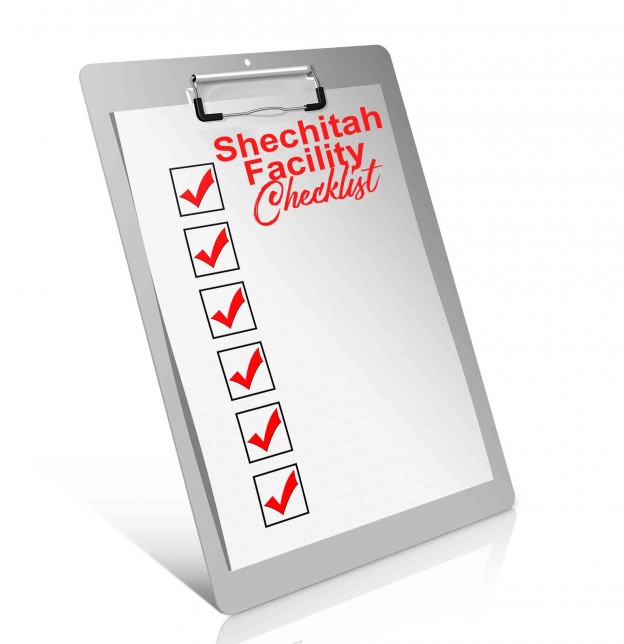
Published Winter 2016
- All the knives of the shochtim must be checked to ensure that they are sharp and without even the slightest ‘pegima’. This must be done before and after the shechitah.
- There must be a sink with running water near the place of shechitah for the shochtim to sharpen their knives.
- Animals may not be prodded to the shechitah box with a plug-in electric prod.
- The head restraint in the box which holds the animal during shechitah must be calibrated so that the animal’s head cannot move during shechitah, but not so tightly that it affects the animal’s breathing.
- A system must be in place, to track any animal that becomes a nevaila.
- Animals may not be stunned at any time after the shechitah.
- No hot water may be used on the animals anywhere in the slaughter house.
- No electric current may be applied to the animal at any point, including when used to tenderize the meat or to facilitate removing the hide.
- All organs, etc., of each animal must be numbered to identify the animal from which they came i.e., tongues, livers, sweet breads, tails, cheek meat, etc.
- The bodek must be able to see the stomach(s) as they are removed from the animal to make sure there are no problems with the stomach(s).
- There must be adequate space and time for the bodek pnim to be able to make an internal inspection of the lungs (bedikas pnim).
- A table with running water and compressed air must be available for checking the lungs of the animals.
- Meat and offal of Glatt Kosher and Beis Yosef meat must be tagged and marked accordingly by the mashgiach.
- The mashgiach must note the date and time of the shechitah on each forequarter of meat and offal.
- The chemical spray used to spray the meat to protect against E. coli and listeria must be checked to see if it is Kosher l’Pesach.
- A daily accounting must be kept of how many animals are Glatt Kosher and how many are Beis Yosef.

 STAR-D
STAR-D STAR-S
STAR-S